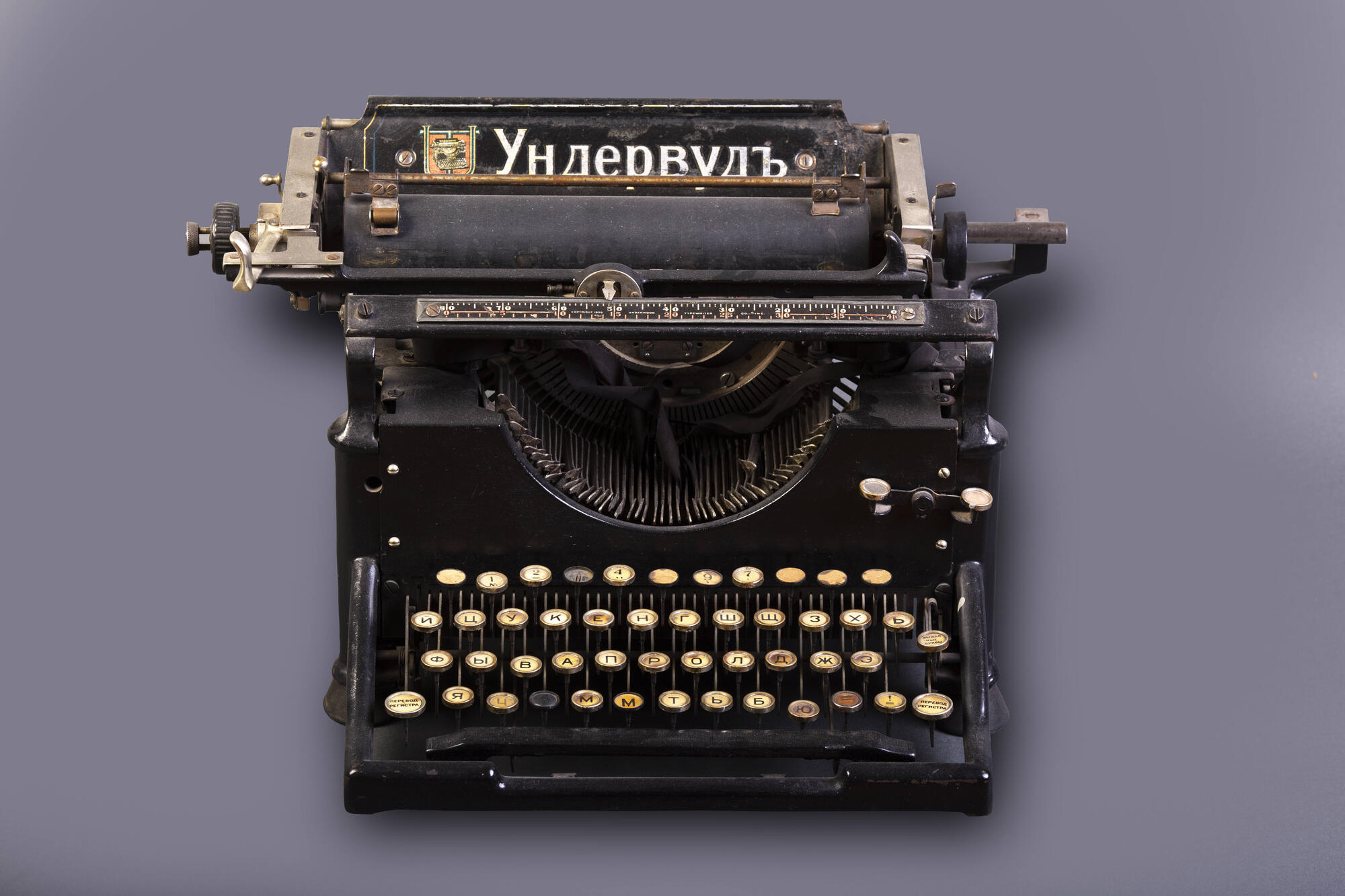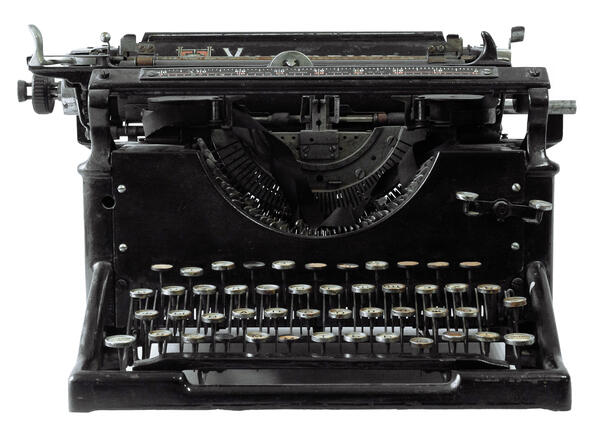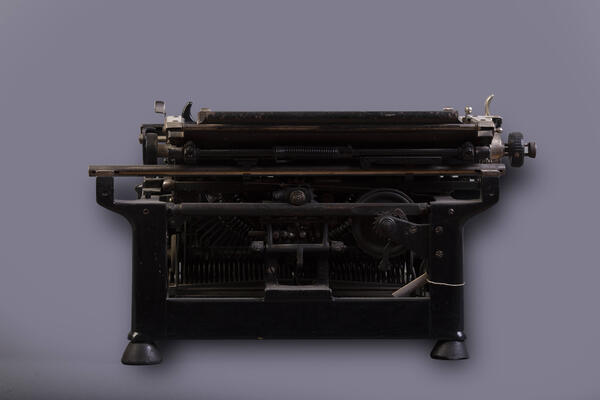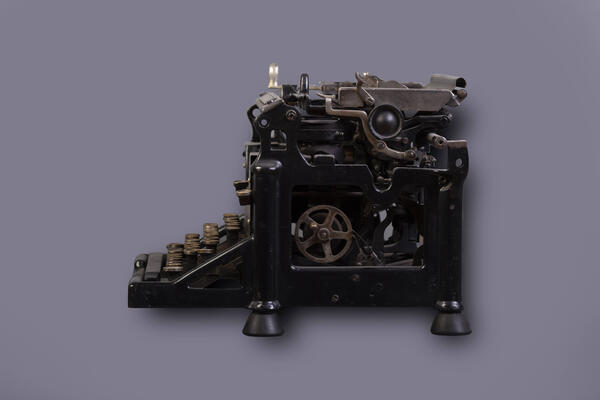The history of the typewriter goes back to 1714 when the Queen of England first granted a patent for a typewriter to its inventor Henry Mill. There are no pictures of this typewriter and no documents have survived either.
The “Underwood” was the first modern and truly popular typewriter, manufactured by the eponymous company headquartered in New York City from 1895 to 1959. From 1874 the Underwood family produced typewriter ribbon and carbon copy paper and were part of “Remington & Sons”, a company that manufactured typewriters. Soon the Remingtons began producing consumables in-house themselves; John Underwood responded by setting up production of his own typewriters.
The first “Underwood” typewriter was invented by the German-born American Franz Xavier Wagner, who showed it to the entrepreneur John Thomas Underwood. Underwood supported Wagner and bought his company, acknowledging the potential commercial success of the machine. “Underwood” No. 1 and No. 2, produced between 1896 and 1900, had the “Wagner Typewriter Co.” inscribed on the back.
In its heyday, as the world’s largest manufacturer of typewriters, the company’s factory in Hartford, Connecticut, produced one typewriter per minute. Around 1910, the Underwoods began to incorporate addition and subtraction functions into their typewriters. In the years leading up to World War II, the company built the world’s biggest typewriter, which was exhibited at the Garden Pier in Atlantic City, New Jersey, and drew big crowds.
The “Underwood” is not just a symbol of the era, but also the progenitor of later typewriters. Previously available only to intellectuals, scientists and journalists, the new technology, which simplified its use, meant it could now be used by people with no special skills. The production of the typewriter has long been discontinued, but it has become an artefact and is collected by many collectors.
The “Underwood” was the first modern and truly popular typewriter, manufactured by the eponymous company headquartered in New York City from 1895 to 1959. From 1874 the Underwood family produced typewriter ribbon and carbon copy paper and were part of “Remington & Sons”, a company that manufactured typewriters. Soon the Remingtons began producing consumables in-house themselves; John Underwood responded by setting up production of his own typewriters.
The first “Underwood” typewriter was invented by the German-born American Franz Xavier Wagner, who showed it to the entrepreneur John Thomas Underwood. Underwood supported Wagner and bought his company, acknowledging the potential commercial success of the machine. “Underwood” No. 1 and No. 2, produced between 1896 and 1900, had the “Wagner Typewriter Co.” inscribed on the back.
In its heyday, as the world’s largest manufacturer of typewriters, the company’s factory in Hartford, Connecticut, produced one typewriter per minute. Around 1910, the Underwoods began to incorporate addition and subtraction functions into their typewriters. In the years leading up to World War II, the company built the world’s biggest typewriter, which was exhibited at the Garden Pier in Atlantic City, New Jersey, and drew big crowds.
The “Underwood” is not just a symbol of the era, but also the progenitor of later typewriters. Previously available only to intellectuals, scientists and journalists, the new technology, which simplified its use, meant it could now be used by people with no special skills. The production of the typewriter has long been discontinued, but it has become an artefact and is collected by many collectors.






